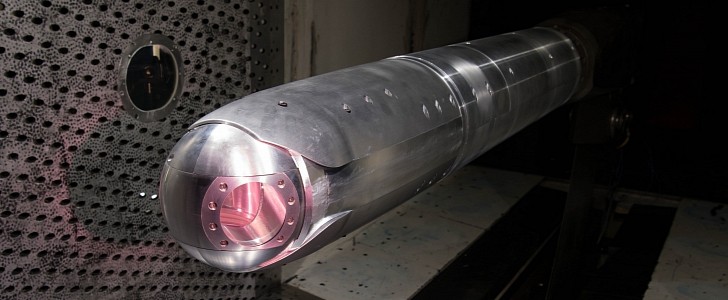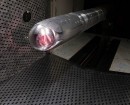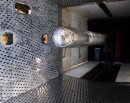The Arnold Engineering Development Complex's Aerodynamics Branch has recently begun testing experimental directed energy weapons in wind tunnels ahead of their integration onto fighter jets.
Having more than 68 wind tunnels for aerodynamics and propulsion that can replicate flying conditions from sea level to 300 miles (483 km) and subsonic velocities to Mach 20, the Arnold Engineering Development Complex (AEDC) is supporting the U.S. Air Force in taking directed energy systems airborne.
These directed energy systems use high-energy lasers or microwaves to eliminate threats. According to Dr. Rich Roberts, chief of the Aerodynamics Branch Store Separation Section, integrating these systems into aircraft has significant advantages, but it also creates some challenges, especially when higher speeds are involved.
Namely, the shockwaves and other aero-optics flow disruptions caused by a fighter jet during flight can impair the beam quality and performance of a directed energy system. This is where wind tunnel testing comes into play.
By testing different prototypes at high speeds, engineers can monitor changes in airflow while adjusting variables like Mach number and altitude pressure. The AEDC team has worked to develop the Aero Isolation Measurement System in order to enable aero-optical directed energy systems testing in the wind tunnels.
In a recent test in the 4-foot (1.2 meters) transonic wind tunnel, engineers focused on a supersonic aero-mitigation project, seeking to reduce the impact of high-speed flow over a turret.
"This test in 4T was the first time that this system has been experimentally tested at supersonic conditions.", said Dr. Roberts."The ability to perform aero-optical tests of directed energy systems in the wind tunnels represents a new test capability for AEDC."
Using this new capability, AEDC is aiming to construct the Integrated Directed Energy Aero-Optical Surrogate, a subscale model of an F-15 Eagle that can test laser pods. Using the wind tunnel tests, the team will be able to move towards a live flight test phase.
These directed energy systems use high-energy lasers or microwaves to eliminate threats. According to Dr. Rich Roberts, chief of the Aerodynamics Branch Store Separation Section, integrating these systems into aircraft has significant advantages, but it also creates some challenges, especially when higher speeds are involved.
Namely, the shockwaves and other aero-optics flow disruptions caused by a fighter jet during flight can impair the beam quality and performance of a directed energy system. This is where wind tunnel testing comes into play.
By testing different prototypes at high speeds, engineers can monitor changes in airflow while adjusting variables like Mach number and altitude pressure. The AEDC team has worked to develop the Aero Isolation Measurement System in order to enable aero-optical directed energy systems testing in the wind tunnels.
In a recent test in the 4-foot (1.2 meters) transonic wind tunnel, engineers focused on a supersonic aero-mitigation project, seeking to reduce the impact of high-speed flow over a turret.
"This test in 4T was the first time that this system has been experimentally tested at supersonic conditions.", said Dr. Roberts."The ability to perform aero-optical tests of directed energy systems in the wind tunnels represents a new test capability for AEDC."
Using this new capability, AEDC is aiming to construct the Integrated Directed Energy Aero-Optical Surrogate, a subscale model of an F-15 Eagle that can test laser pods. Using the wind tunnel tests, the team will be able to move towards a live flight test phase.







